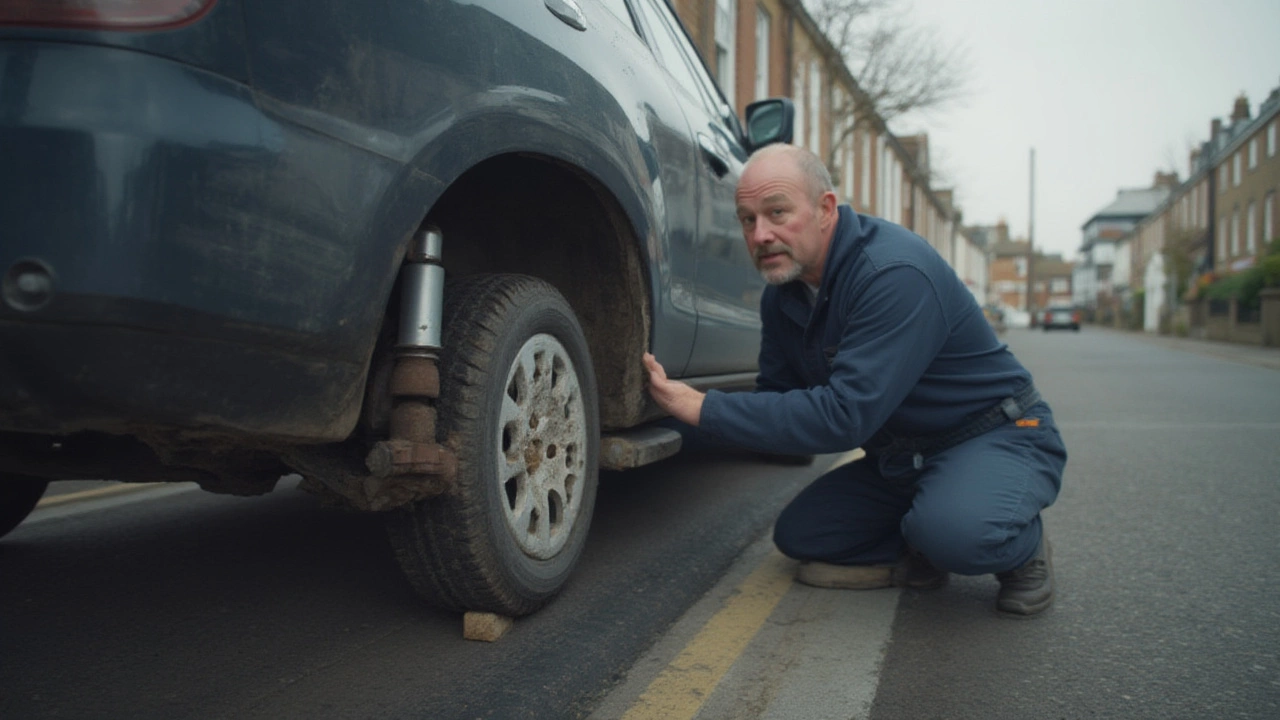Shock Absorber Problems: How to Spot, Diagnose, and Fix Them
If your car feels like a boat on bumpy water, chances are the shock absorbers are the culprits. Bad shocks don’t just make the ride uncomfortable – they can affect braking, steering and even wear out your tires faster. Below we break down the most common signs, why shocks fail, and what you can do before the problem gets pricey.
Common Signs Your Shock Absorbers Are Failing
First thing to look for is excessive bounce. Push down on the front or rear of the car; if it rebounds more than once, the shocks are probably worn out. You might also notice a drifting feeling when you let go of the steering wheel after a turn – that’s the car trying to correct a lost grip.
Uneven tire wear is another red flag. If the inner edges of your tires are wearing faster than the rest, bad shocks are failing to keep the wheels stable. Listen for clunking noises over potholes or rough roads – a loose shock mount or a broken damper can make a rattling sound.
Finally, pay attention to how the car handles braking. If it nose‑dives sharply when you hit the brakes, the front shocks aren’t absorbing the weight transfer. That makes stopping less predictable and can be unsafe, especially in wet conditions.
What to Do About Bad Shock Absorbers
The quickest test you can do at home is the “push‑and‑release” method. With the car parked on level ground, push down hard on the front or rear bumper and watch the bounce. One or two quick rebounds mean the shocks are still functional; more than that signals a replacement is needed.
If you confirm the problem, the next step is to decide between repair and replacement. Most modern shocks are sealed units, meaning they’re cheaper to replace than repair. A typical replacement for a passenger car costs between £80 and £200 per shock, plus labour. If you’re comfortable with basic tools, you can swap them yourself – just lift the car safely, remove the wheel, unbolt the shock, and fit the new unit.
When you’re not sure, bring the car to Northwich Tyres Centre. Our technicians can do a detailed suspension check, spot hidden damage (like worn bushings or broken mounts), and give you a clear price before any work starts. We’ll also align the wheels after fitting new shocks, which is essential for good handling and tire life.
To keep shocks healthy longer, avoid hitting big potholes, drive slower over rough surfaces, and check your tire pressure regularly. Properly inflated tires reduce the load on the suspension and can delay shock wear.
Bottom line: don’t ignore bounce, rattles, or uneven tyre wear. Catching shock absorber problems early saves you money, keeps your car safe, and makes every drive smoother. If you need an inspection or new shocks, swing by Northwich Tyres Centre – we’ve got the parts and know‑how to get you back on the road without the wobble.
 16 July 2025
16 July 2025
How to Spot Bad Suspension Shocks: Warning Signs and Solutions for Your Car
Learn how to tell if your car’s suspension shocks are bad, spot the warning signs, and get expert tips to keep your ride safe and comfortable.






0